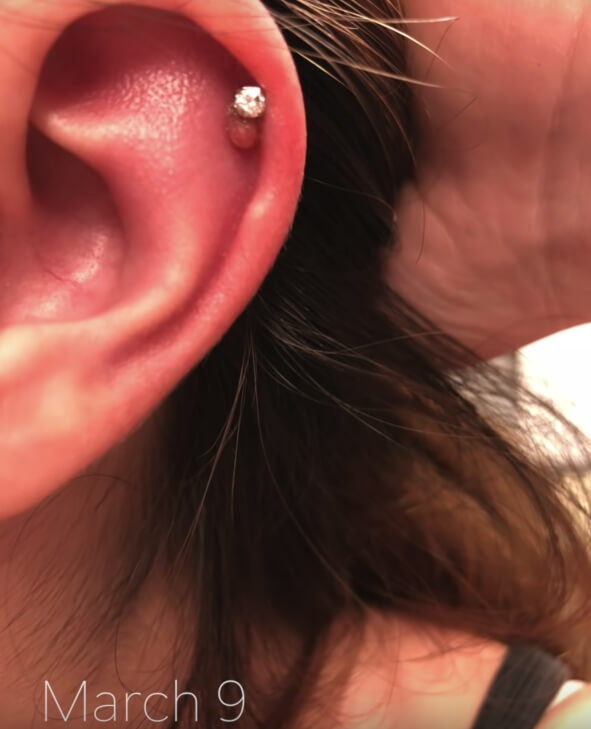Piercing the ear cartilage no matter the method results in keloids around inside or outside of the piercing location. A piercing keloid usually appears on a new piercing.

Piercing Bump 6 Ways To Get Rid Of Cartilage Or Nose Keloid
Golomb Cynthia Cynthia Golomb Md Dermatology Boutique
How to get rid of piercing bump.

Bleeding keloid ear piercing.
Cartilage piercings heal more slowly than earlobe piercings and are prone to irritation.
A keloid scar is especially common on the ear due to infections from ear piercing.
Keloids can appear on your ear in response to any type of wound including a piercing.
But if you dont take care of your ear piercing and dont follow some basic precautions the keloid may develop which once develop are not only difficult to treat but also in some cases goes on spreading.
Keloids occurring after piercing procedure can occur in ear and earlobe.
This excessive collagen production will produce keloids.
Well go over the causes of an ear keloid before diving into all the treatment options.
If you decide to chance it make sure youre aware of the risks and the likelihood a keloid will form.
Hypertrophic scarring is a temporary condition and is treated by changing the jewelry and subjecting the ear piercing to sea salt.
Keloid scars generally appear darker and shinier than normal skin but can also be red or pink in color.
How to minimize the risk of having keloids after get an ear pierced.
Seeing as theres no real limit as to where keloids can form they can also grow on the tongue and other mucus membranes the only way to truly prevent formation of a keloid is to avoid getting the tattoo or piercing in the first place.
During the healing period of a piercing and after the piercing is healed you may encounter a keloid on and around your new piercing.
Keloid symptoms include pain and itchiness on the scar as well as a noticeable change in skin texture around the keloid.
How to prevent keloids on ear piercings.
A keloid is scar tissue that grows and rises in or around a cartilage piercing.
Piercing wound can also result in keloid as our ears are still producing collagen to heal the wound.
Piercing of ears on various points is much trending than ever it was.
The reason for this is genetic and age.
Receiving a piercing with a sterilized needle from a professional body piercer that provides thorough aftercare guidelines decreases the possibility of keloid formation.
Youll also learn.
In the first few days after getting your piercing you may notice a bump or general swelling around the.
A cartilage keloid happens to old piercings as a result of bacteria getting into the wound.
But an ear piercing bump can also come out later on the ear hole during the initial healing process which could take up to 1 year for the cartilage piercings.
Keloids are commonly confused with hypertrophic scarring in ear cartilage piercings.
Keloids are scar tissue that result from a hereditary condition causing the skin to raise and turn pink or red residing inside or around the hole of your piercing according to the american osteopathic college of dermatology.

People Are Using Rubber Bands To Perform Diy Scar Removal

No comments:
Post a Comment